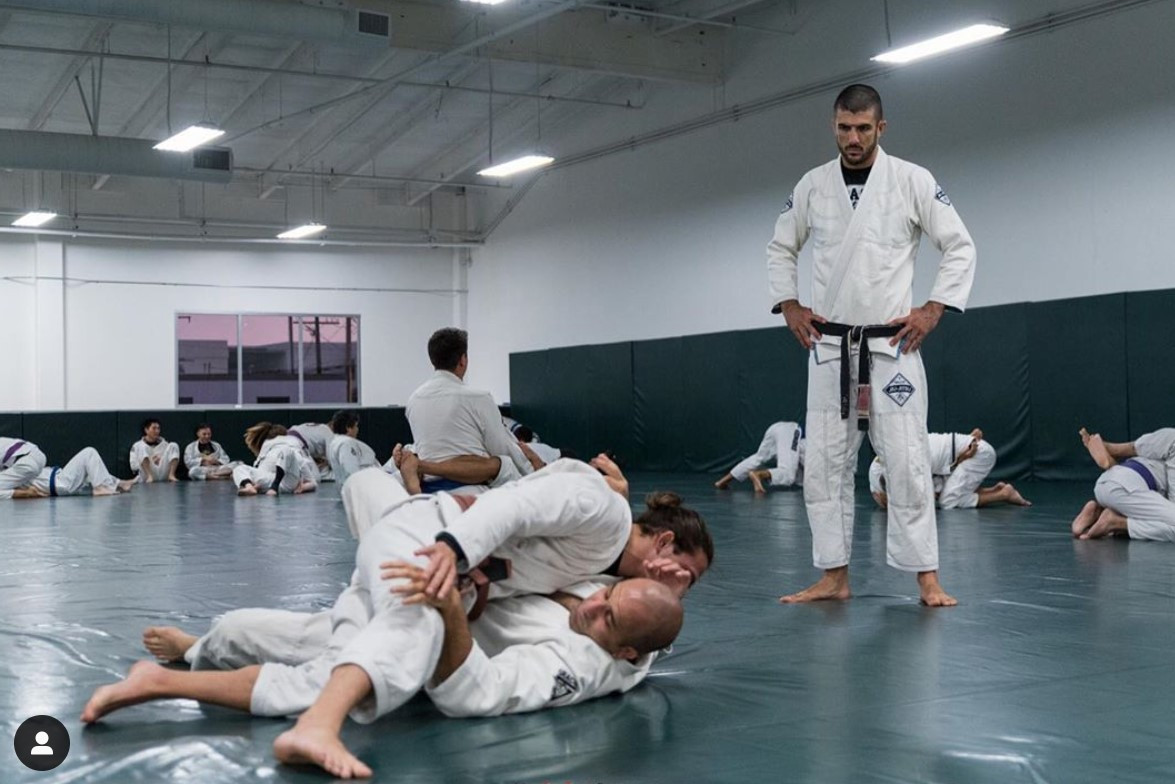Ego-less Sparring
Gracie Combatives is a program designed for adults who are new to jiu-jitsu. It teaches the essential techniques of jiu-jitsu through careful instruction, allowing students to develop their reflexes and learn how to incorporate moves while in a real-world fight scenario. What may come as a surprise is that students often take classes for months or even up to a year before they begin sparring.
There are several reasons for doing this. It reduces injuries, it doesn’t discourage people who may not be as strong or fast as some of the other people in their class, and it allows students to focus on learning the techniques of jiu-jitsu rather than trying to simply win a fight. It also gives students time to prepare to spar without an ego.

Sink or Swim
Most people who start taking jiu-jitsu classes as adults come from athletic backgrounds. What they’ve learned from their time in athletics is that success is defined by victory and that victory comes after demonstrating explosiveness, speed, and strength. Consequently, they step onto the mat determined to dominate their opponent and prove themselves.
A lot of jiu-jitsu academies cater to this mentality. They foster a sink-or-swim environment by encouraging students to start sparring after just a few classes. No surprise, when they get mounted and put on the defensive, they abandon whatever techniques they have been taught and instinct takes over. Since they have no training and are relying on the ingrained belief that losing is unacceptable, they begin flailing around like a wild animal. On the one hand, this is how people get hurt. On the other, it doesn’t encourage good technique. It’s just chaos.
For example, if there is a 50 lbs different between two inexperienced sparring partners, then the larger person is probably going to end up on top in these kinds of uncontrolled scenarios. This may inflate their ego and allow them to build confidence because they are learning how to control their opponent and the pace of a fight, but this comfort comes at a price. They are not allowing themselves to practice being in the bottom position, which means their training is, at best, not well-rounded. At worst, it means they may not know how to respond if they do get mounted or find themselves in the bottom position in a street fight because they have not trained for it.
Walk, Then Run

According to the Gracie method, students need a significant amount of instruction and training through fight simulation drills before they are ready to begin sparring. By going through the drills in the Gracie Combatives program repeatedly and learning the principles of jiu-jitsu, students begin to replace instinct with technique and to understand how and where to implement certain moves.
In time, students also learn the importance of having a good training partner and how to be a good partner. This is especially necessary for students who are training at home with one or a few other people. When you have dozens of potential partners, you get the benefit of going up against people with different body types, different levels of strength, and different skill sets. This allows students to try out different variations of technique and to really become more well-rounded fighters.
Being a Chameleon
It’s often said that variety is the spice of life. It’s also the way that you become a better fighter who is prepared for real-world fight scenarios and more capable of adapting to different fighting styles. When you have just one or two partners, you have to get creative. “You have to become each other’s teachers,” Rener Gracie says.
If you take the two partners from above, the person who is 50 lbs heavier than the other needs to consciously try to not use their size as leverage all the time. They need to sometimes be explosive and other times be slow and methodical. They need to play the part of an attacker who is skilled at jiu-jitsu and someone who is an amateur. By changing things up, their partner never knows what to expect and continues to be challenged. Meanwhile, their partner should be doing the same for them. Mastering techniques means learning how to use them in a variety of contexts, from different positions, and against a variety of fighters. If you only have one partner, both of you will have to try to fill those roles.
The Road to Egoless Sparring
Even if you are in a class with dozens of people, you should still be trying to take on different roles with your partner. In some cases, this may mean that you are in a position where you are almost sure to be submitted. While that sports mentality of needing to be victorious may make this difficult to accept, bear in mind that this is just a training exercise and that you need to prepare yourself to be humbled. Sparring needs to be more like a chess match than a street fight.
By nurturing the growth of your training partner, you make them a better partner. When they are better partner, they can offer you more challenges. This makes you a better. The same is true for your partner. When they are nurturing your growth, they make you better. When you’re better, you can provide a challenging experience for them. This makes them better. Both you and your partner end up learning technique and how to overcome instinct while preparing yourselves to spar at higher intensities without getting ego involved.
Learning how to check your ego and respect your partner while training or sparring will ultimately allow you to train in more realistic scenarios and become a better fighter.
